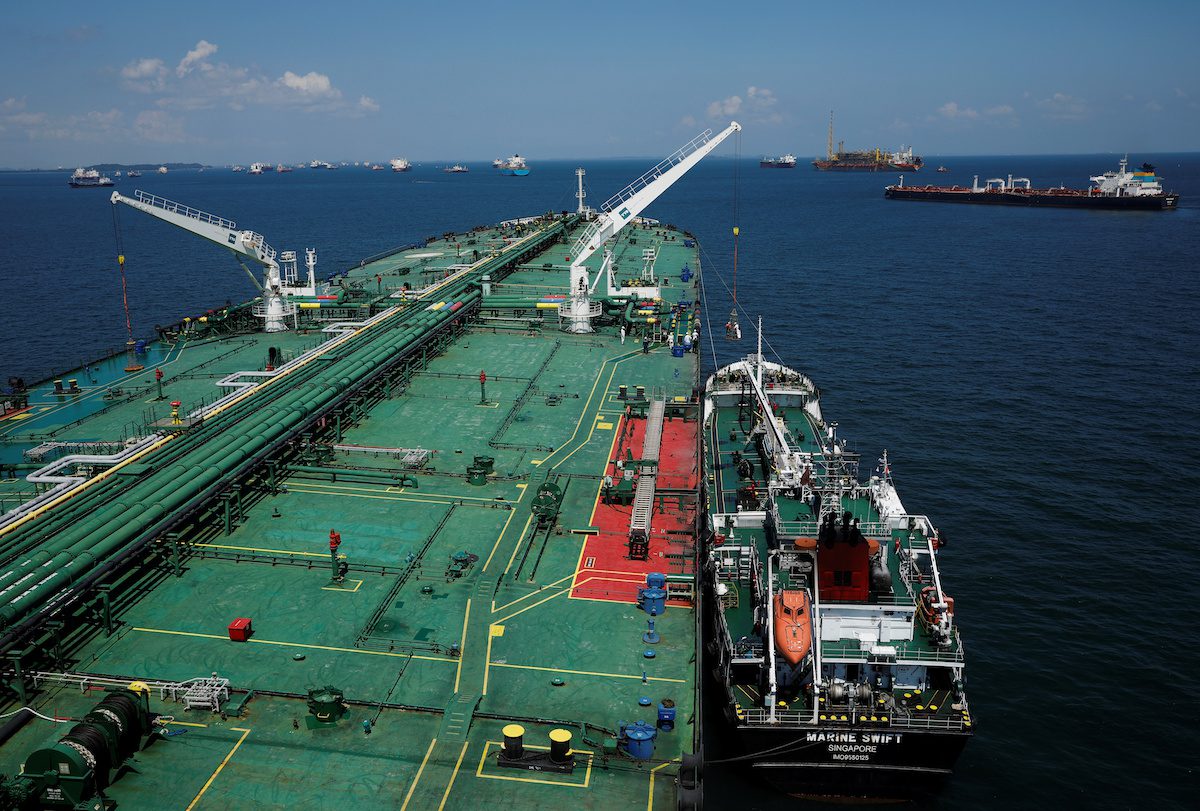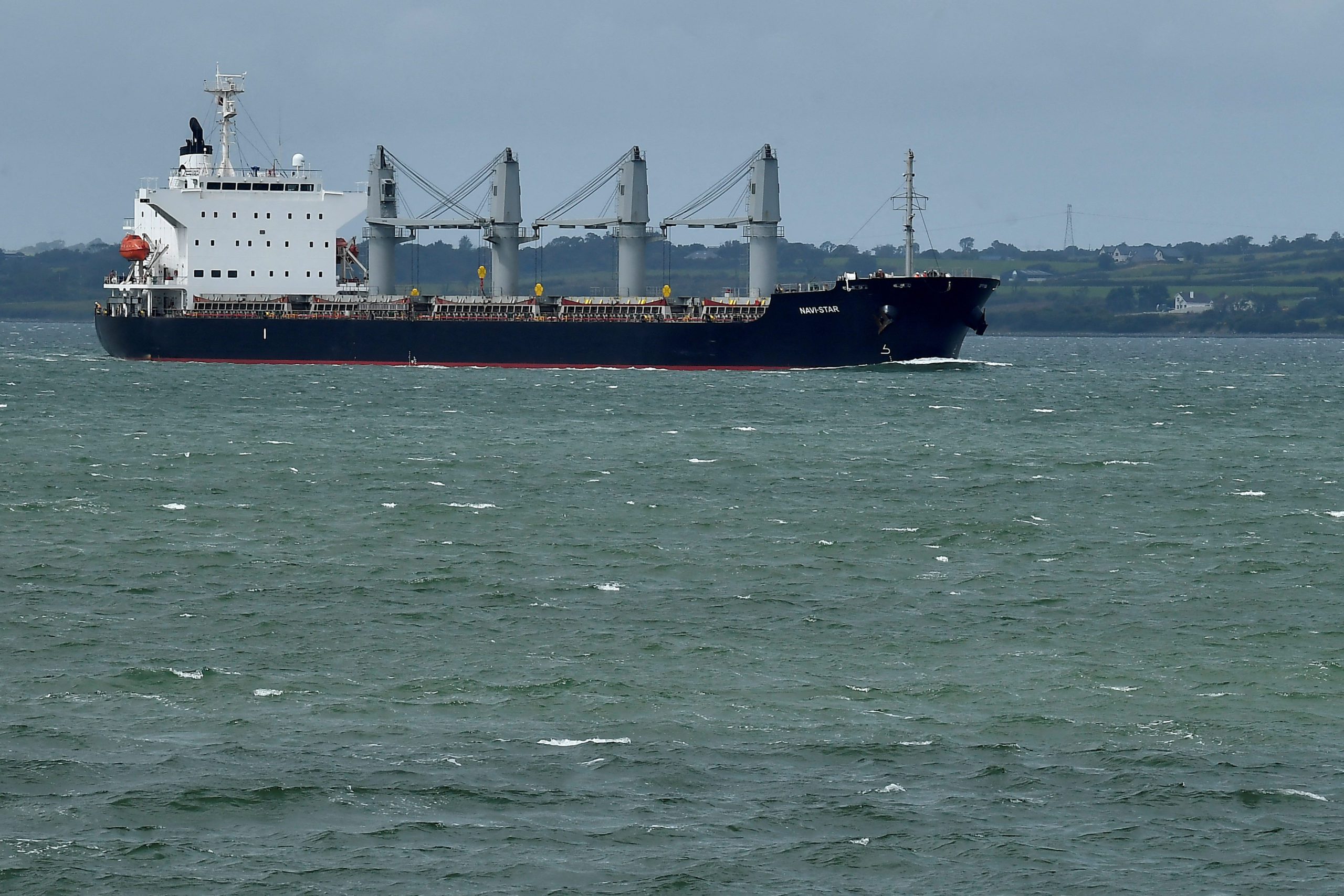by John Konrad (gCaptain) South African bunker traders are facing a unique challenge as an influx of ships, diverted from the Red Sea due to threats from Houthi rebels, are overwhelming African ports. This situation has extended voyages between Asia, the Middle East, and Europe by up to two weeks, making stops at South African ports like Durban and Cape Town essential for ships to top up their fuel. This situation has raised significant concerns regarding the escalating costs and availability of fuel, as well as growing apprehensions about carbon emissions.
Carbon Intensity
The diversion of maritime traffic from the Red Sea, driven by security concerns, leads to a significant, albeit unintended, environmental consequence: heightened carbon emissions. This could be challenging for ship owners because, starting January 1st 2024, the International Maritime Organization (IMO) will require all ships to meet new the Carbon Intensity Indicator (CII) requirements. This system is designed to evaluate ships’ carbon emissions and apply corresponding financial rewards or penalties. To adhere to these standards, numerous vessels are planning to operate at reduced speeds. However, the longer journey necessitated by rerouting around Africa – approximately 12,000 nautical miles – might compel ships to increase their speed to compensate for delays, potentially contravening emission targets.
Additionally, a 2020 mandate from the IMO stipulates the use of very-low-sulfur fuels (VLSFO) or the installation of emission scrubbers on ships. This regulation restricts fuel choices for vessels that haven’t invested in scrubbers and limiting the options for ships trying to refuel in overwhelmed ports.
As of now, there’s no official statement from the IMO or other regulatory authorities regarding any potential suspension or modification of these carbon-related mandates in light of the new routing challenges.
Fuel Stocks
While there is confidence in major South African ports like Durban having sufficient fuel stocks, including high sulphur fuel oil (HSFO), very low sulphur fuel oil (VLSFO), and marine gas oil (MGO), the costs are a major concern. Fuel prices in South Africa are significantly higher than major bunkering ports like Singapore and Rotterdam due to the heavy reliance on imported fuels and limited local production. For instance, Durban’s pricing for HSFO (High Sulphur Fuel Oil) is approximately a thousand dollars higher per ton compared to Singapore, whereas the price difference for VLSFO (Very Low Sulphur Fuel Oil) between the two cities is under one hundred dollars.
An additional challenge comes from the shutdown of offshore bunkering operations in Algoa Bay, near Port Elizabeth, after revenue service officials arrested tankers servicing the facility on tax evasion charges, causing a shift in demand to other ports. The situation is further complicated by South Africa’s sole oil refinery near Cape Town, which is inadequate to meet the increasing demand. The vast majority of the marine fuels used in the country’s ports are imported, leading to higher costs. These costs could skyrocket as tanker market rates rise due to the Red Sea disruption,.
A report by Linsen Nambi Bunkering Services sheds light on the decline in the bunker market over the past 15 years in South Africa, with a 61% decrease in bunker supplies. This is attributed to insufficient investment in both local refineries and terminal infrastructure, impacting the ability to produce and deliver marine fuel efficiently. South Africa is also suffering from a slow decline in the reliability of the electrical grid and infrastructure serving ports.
Despite these challenges, bunker fuel manager Gavin Naidoo from Linsen Nambi told Tradewinds that the existing infrastructure can cope with the surge in demand, with Durban operating at only 20% of its capacity. However, he noted that the response to this demand surge also hinges on whether oil companies can provide adequate fuel supplies.
The congestion from an excess of ships seeking to refuel could further escalate operational expenses, as South African ports struggle to cope with the overwhelming demand.
Tags:

 Join The Club
Join The Club











